Buddhist Mountain Monasteries in Korea
Daeheungsa Temple
Daeheungsa Temple
Introduction
Natural Environment
History
Temple Layout
Cultural Properties
Information
Natural Environment of Duryunsan Mountain
- Duryunsan Mountain is located in Samsan-myeon, Haenam-gun, Jeollanam-do Province. Surrounding the main peak, Garyonbong (703m), there are 8 serial peaks called Duryunbong, Gogyebong, Noseungbong (Neungheodae), Dosolbong, Hyeolmangbong, Hyangnobong, and Yeonhwabong overlooking the South Sea. When viewed from the Haetalmun Gate of Daeheungsa Temple, the mountain appears to be in the shape of the Buddha lying down. The appearances of Gogyebong and Garyeonbong, in particular, are reminiscent of the mudra or hand gesture of the wisdom of Vairochana. Daeheungsa is also sheltered by Wolchulsan Mountain on the north, Dalmasan Mountain on the south, Cheongwansan Mountain in the East, and Seoneunsan on the west, and it is considered to be free of the Four Maharajas images as it is ideally located based on the theories of geomancy.
-
 Duryunsan Mountain as an image of the reclining Buddha
Duryunsan Mountain as an image of the reclining Buddha
- As for the natural environment of Duryunsan, there are forests comprised of warm temperate ever-green broad-leaved trees and temperate deciduous broad-leaved trees. There are also colonies of the Korean hornbeam, which is distributed in the temperate zones, and Asian hornbeam, found in the southern temperate zones. in recognition of its ecological value, it was designated as a provincial park in December 1979. As for the geological features, the main peak consists of granite rocks that interpenetrated in the late Cretaceous period, creating unique scenery that was shaped by nature. The valley originating from Duryunbong separates Daeheungsa Temple into southern and northern compounds, and flows along Jangchungil and Gurimgugok, called the “forest trails with nine bends,” forming trails through the cypress forest. The area has been officially designated as a scenic site in recognition of its exceptional scenery.
-
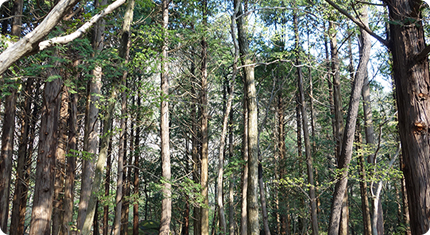 Cypress forest trail forming along Gurimgugok
Cypress forest trail forming along Gurimgugok
-
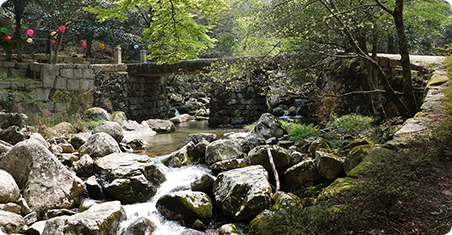 Banyagyo Bridge and Daeheungsa Valley
Banyagyo Bridge and Daeheungsa Valley
- The main tree species include the zelkova found at Daeheungsa and Maniramji and the red-wood evergreen oak. The zelkova trees with interconnected roots found near the Samjingyo Bridge of Daeheungsa are often compared to lovers because of their unique growth formation and are regarded as an auspicious sign that allows wishes to come true. They are about 500 years old, and have been designated to be under protection. There is a 1,000-year-old zelkova tree at the Maniram site, and legend has it that the sun was hung here at the time of Bukmireugam and Nammireugam construction. It is estimated to be actually 1,200 years old, and it has been designated as a legally protected tree. In addition, there is a red-wood evergreen oak tree at Jinburam that is speculated to be the oldest of its kind in Korea.
-
-
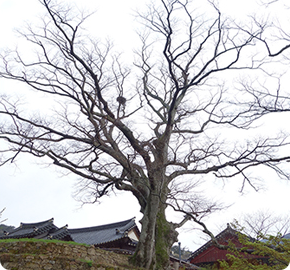 Zelkovas with interconnected roots at Daeheungsa (protected trees)
Zelkovas with interconnected roots at Daeheungsa (protected trees)
-
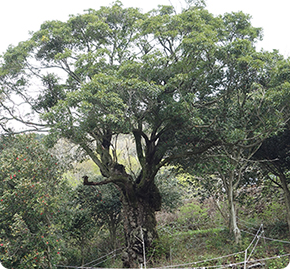 Old red-wood evergreen oak at Jinburam
Old red-wood evergreen oak at Jinburam
-
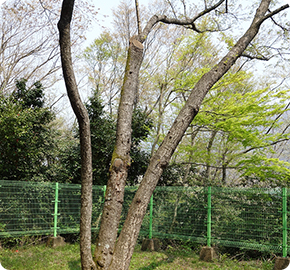 Native habitat of the flowing cheery trees (Natural Monument No. 173
Native habitat of the flowing cheery trees (Natural Monument No. 173
-
- There are two old flowering cherry trees growing behind Daeheungsa Temple, but their exact ages are unknown. This are is the sole natural habitat for flowering cherry trees on land in Korea, except for Jejudo Island, and these trees are under protection as Natural Monument No. 173. Korea is the native habitat for the flowering cherry trees, and because they are a rare species with a small population, it has high ecological value and academic value in plant geography. There was a time when the trees were cut down in Korea as they were the national flower of Japan. However, considering that there weren’t any native habitats of the flowering cherry trees found in Japan, it is speculated that they were grown after they were introduced from Korea.
